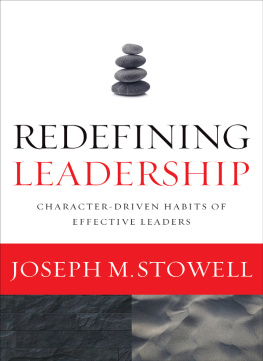TARGETING TOP TERRORISTS
Columbia Studies in Terrorism and Irregular Warfare
COLUMBIA STUDIES IN TERRORISM AND IRREGULAR WARFARE
Bruce Hoffman, Series Editor
This series seeks to fill a conspicuous gap in the burgeoning literature on terrorism, guerrilla warfare, and insurgency. The series adheres to the highest standards of scholarship and discourse and publishes books that elucidate the strategy, operations, means, motivations, and effects posed by terrorist, guerrilla, and insurgent organizations and movements. It thereby provides a solid and increasingly expanding foundation of knowledge on these subjects for students, established scholars, and informed reading audiences alike.
Ami Pedahzur, The Israeli Secret Services and the Struggle Against Terrorism
Ami Pedahzur and Arie Perliger, Jewish Terrorism in Israel
Lorenzo Vidino, The New Muslim Brotherhood in the West
Erica Chenoweth and Maria J. Stephan, Why Civil Resistance Works: The Strategic Logic of Nonviolent Conflict
William C. Banks, editor, New Battlefields/Old Laws: Critical Debates on Asymmetric Warfare
Blake W. Mobley, Terrorism and Counterintelligence: How Terrorist Groups Elude Detection
Jennifer Morrison Taw, Mission Revolution: The U.S. Military and Stability Operations
Guido W. Steinberg, German Jihad: On the Internationalization of Islamist Terrorism
Michael W. S. Ryan, Decoding Al-Qaedas Strategy: The Deep Battle Against America
David H. Ucko and Robert Egnell, Counterinsurgency in Crisis: Britain and the Challenges of Modern Warfare
Bruce Hoffman and Fernando Reinares, editors, The Evolution of the Global Terrorist Threat: From 9/11 to Osama bin Ladens Death
Boaz Ganor, Global Alert: The Rationality of Modern Islamist Terrorism and the Challenge to the Liberal Democratic World
M. L. R. Smith and David Martin Jones, The Political Impossibility of Modern Counterinsurgency: Strategic Problems, Puzzles, and Paradoxes
Elizabeth Grimm Arsenault, How the Gloves Came Off: Lawyers, Policy Makers, and Norms in the Debate on Torture
Assaf Moghadam, Nexus of Global Jihad: Understanding Cooperation Among Terrorist Actors
Bruce Hoffman, Inside Terrorism, 3rd edition
Stephen Tankel, With Us and Against Us: How Americas Partners Help and Hinder the War on Terror
Wendy Pearlman and Boaz Atzili, Triadic Coercion: Israels Targeting of States That Host Nonstate Actors
Targeting Top Terrorists
UNDERSTANDING LEADERSHIP REMOVAL IN COUNTERTERRORISM STRATEGY
Bryan C. Price
Columbia University Press
New York
Columbia University Press
Publishers Since 1893
New York Chichester, West Sussex
cup.columbia.edu
Copyright 2019 Columbia University Press
All rights reserved
E-ISBN 978-0-231-54772-7
Library of Congress Cataloging-in-Publication Data
Names: Price, Bryan C., author.
Title: Targeting top terrorists: understanding leadership removal in counterterrorism strategy / Bryan C. Price.
Description: New York: Columbia University Press, [2019] | Series: Columbia studies in terrorism and irregular warfare | Includes bibliographical references and index.
Identifiers: LCCN 2018031736 (print) | LCCN 2018033612 (e-book) | ISBN 9780231547727 (e-book) | ISBN 9780231188227 (hardcover: acid-free paper) | ISBN 9780231188234 (paperback: acid-free paper)
Subjects: LCSH: TerrorismPrevention.
Classification: LCC HV6431 (e-book) | LCC HV6431 .P737 2019 (print) | DDC 363.325/17dc23
LC record available at https://lccn.loc.gov/2018031736
A Columbia University Press E-book.
CUP would be pleased to hear about your reading experience with this e-book at .
Cover art: Shutterstock

T his book would not have been possible without the help of many people whom I admire and look up to. My dissertation committee at Stanford University deserves the lions share of credit for shaping my views on this topic. I could not have asked for a better dissertation advisor or mentor than Martha Crenshaw, a scholar who has done so much in the field for the past five decades. Perhaps the best compliment I can pay her is that she is an even better person than she is a scholar, and I will be forever indebted to her for taking on a very green PhD candidate. My other committee membersScott Sagan, Kenneth Schultz, and Glenn Carrolldeserve similar thanks and praise. I would have been unable to execute the quantitative analysis without the help of Thomas Brambor, whose ninja coding skills were only outmatched by his patience and generosity. I would also like to thank my team of amazing graduate students at Stanford who carried me across the finish line and who honed my argument in meaningful ways, including Aila Matanock, Amanda Robinson, Tim Johnson, and Rachel Stein.
For the past six years, I have been blessed to work with the most dedicated and talented terrorism scholars at the Combating Terrorism Center and the Department of Social Sciences at West Point. Although naming every faculty member, distinguished chair, senior fellow, and cadet is impractical, special thanks go to those who contributed to this book, such as Brian Dodwell, Don Rassler, Daniel Milton, Arie Perliger, Mohammed al-Ubaydi, Bruce Hoffman, and Assaf Moghadam. I will always be thankful for two amazing bossesColonel Suzanne Nielsen and Brigadier General Cindy Jebb. Thanks also go to the tireless efforts of the Columbia University Press editorial team and to the anonymous reviewers of my manuscript. Finally, I would like to thank my family, who have always supported me during my academic and military career. Without the love of my father Jay Price and my late mother Mary Price, my two brothers Jay and Sean, my wife Tonya, and my one and only daughter Samantha (aka Schmoopie), none of this would have been possible.
L ate in the evening on May 1, 2011, President Barack Obama announced to the nation that Osama bin Laden was dead. Earlier that day, the president had ordered a team of elite military forces to go deep into Pakistan after the mastermind behind the September 11 terrorist attacks that had shocked the country and the world nearly ten years prior. During his speech, President Obama said that he had told his new CIA director, Leon Panetta, that getting bin Laden was the number one priority in the United Statess counterterrorism strategy against al-Qaeda. America broke out in spontaneous celebration, and pundits immediately began speculating about the symbolic and operational importance of the bin Laden killing. But what did bin Ladens death mean, if anything, for the future of al-Qaeda? More broadly, what does it mean when terrorist groups experience the sudden loss of their leader?















